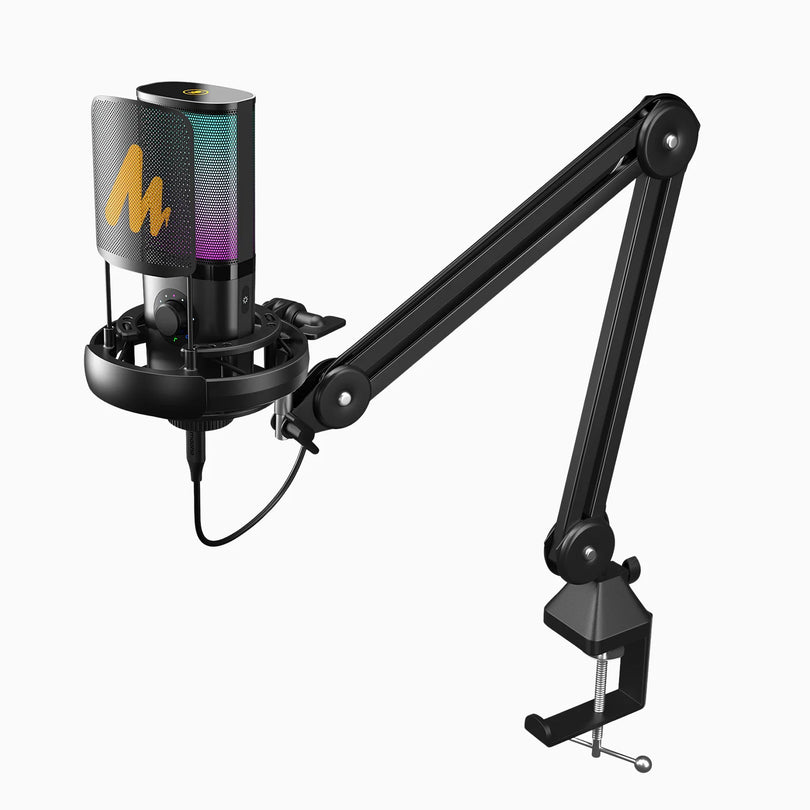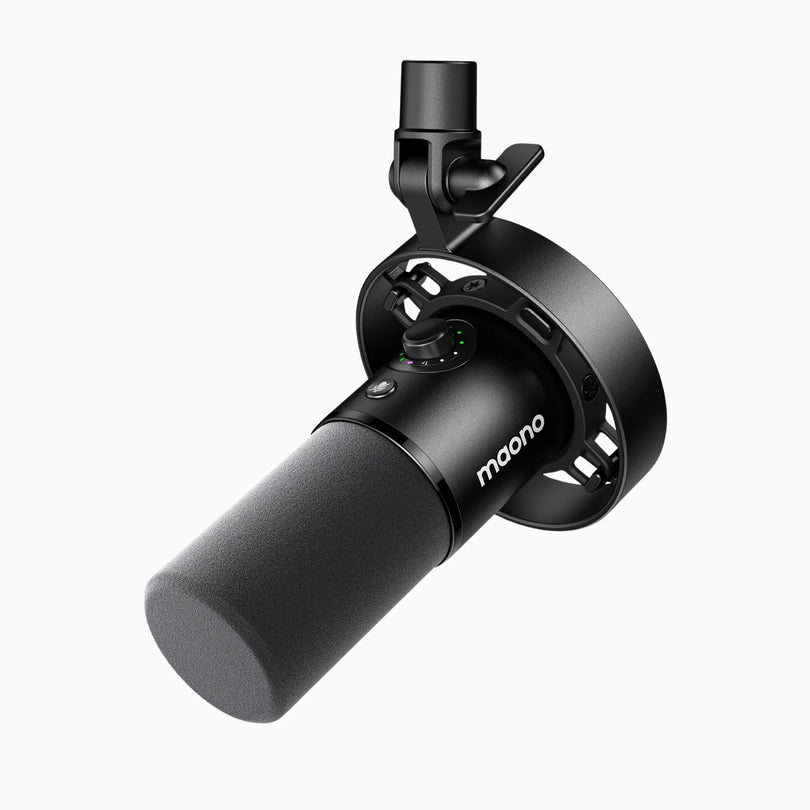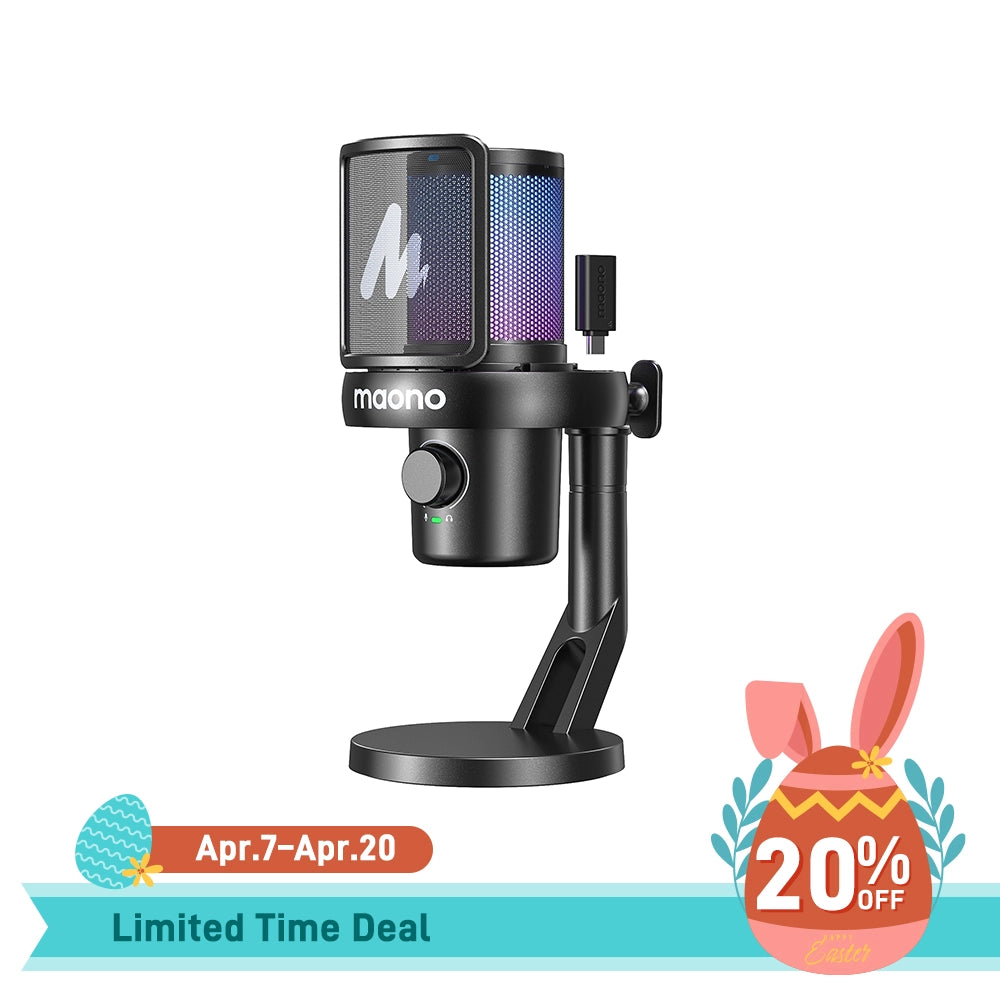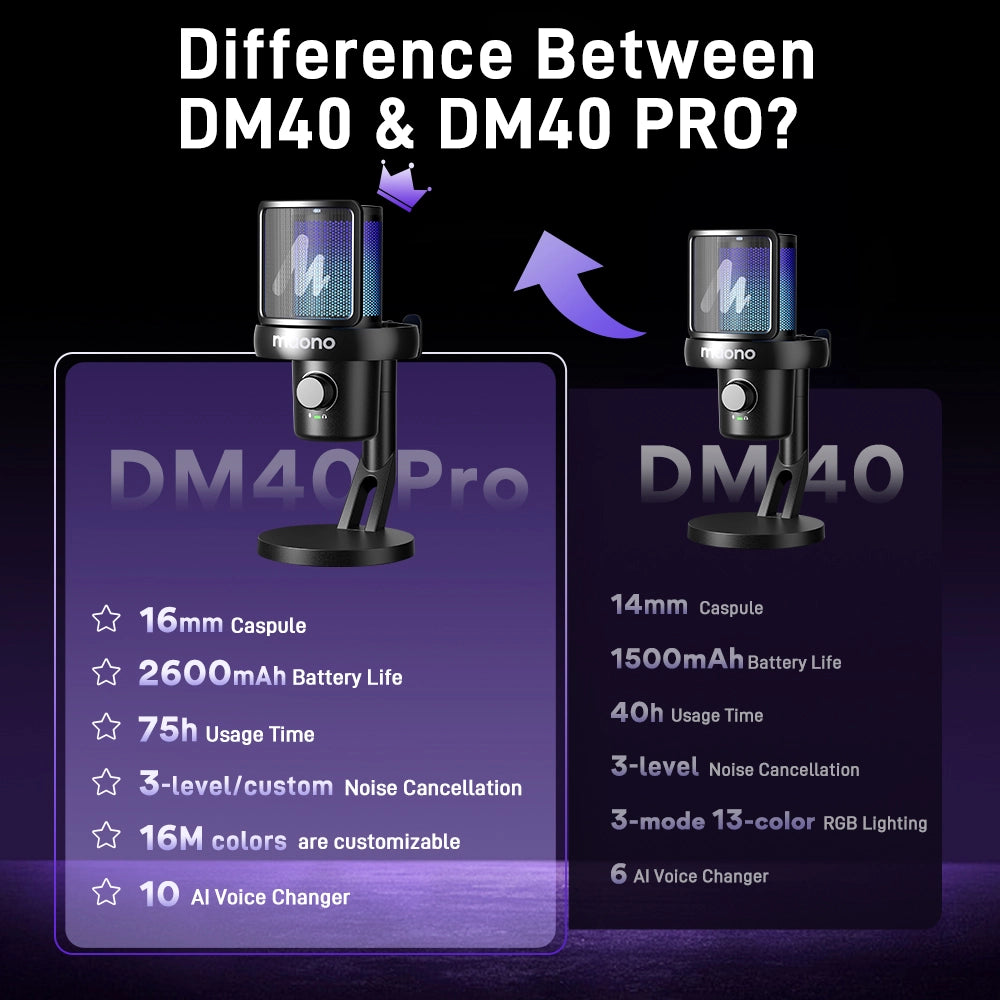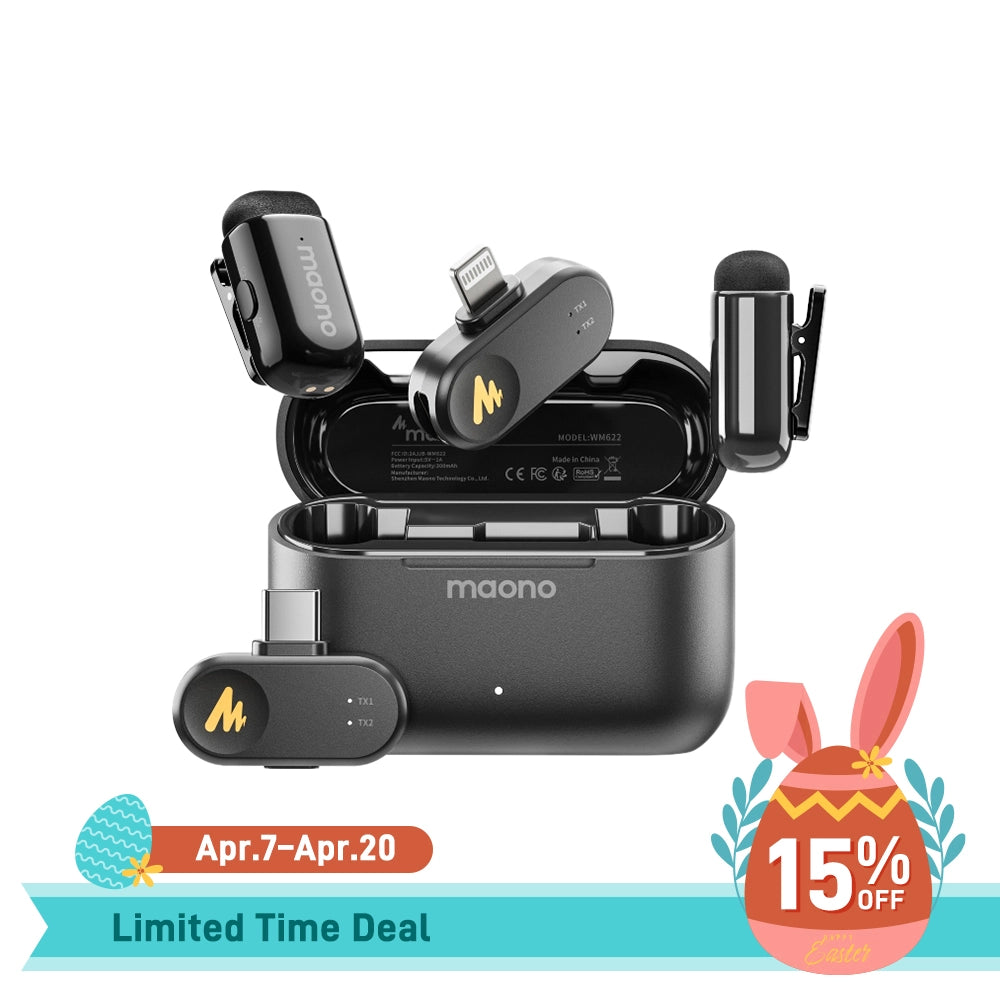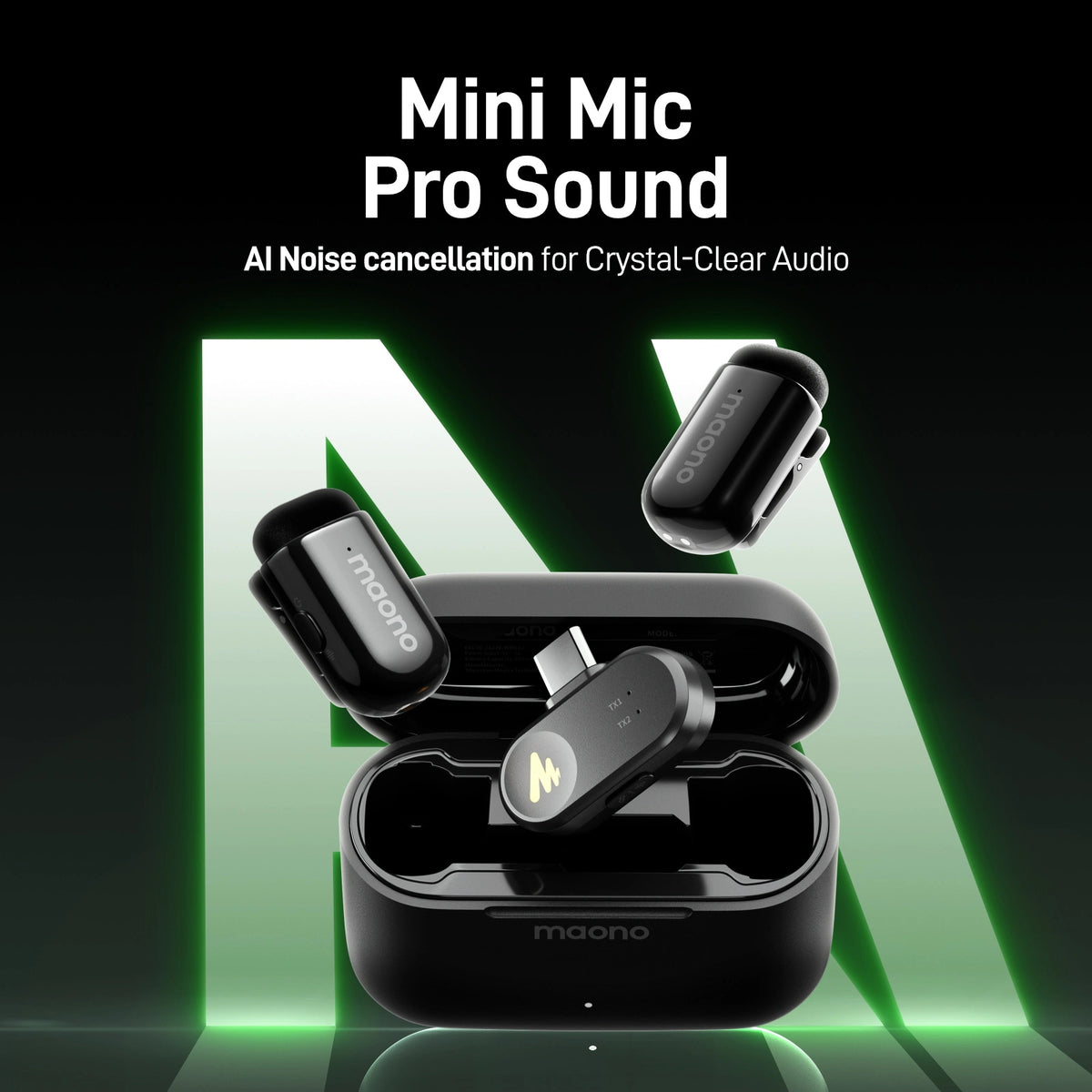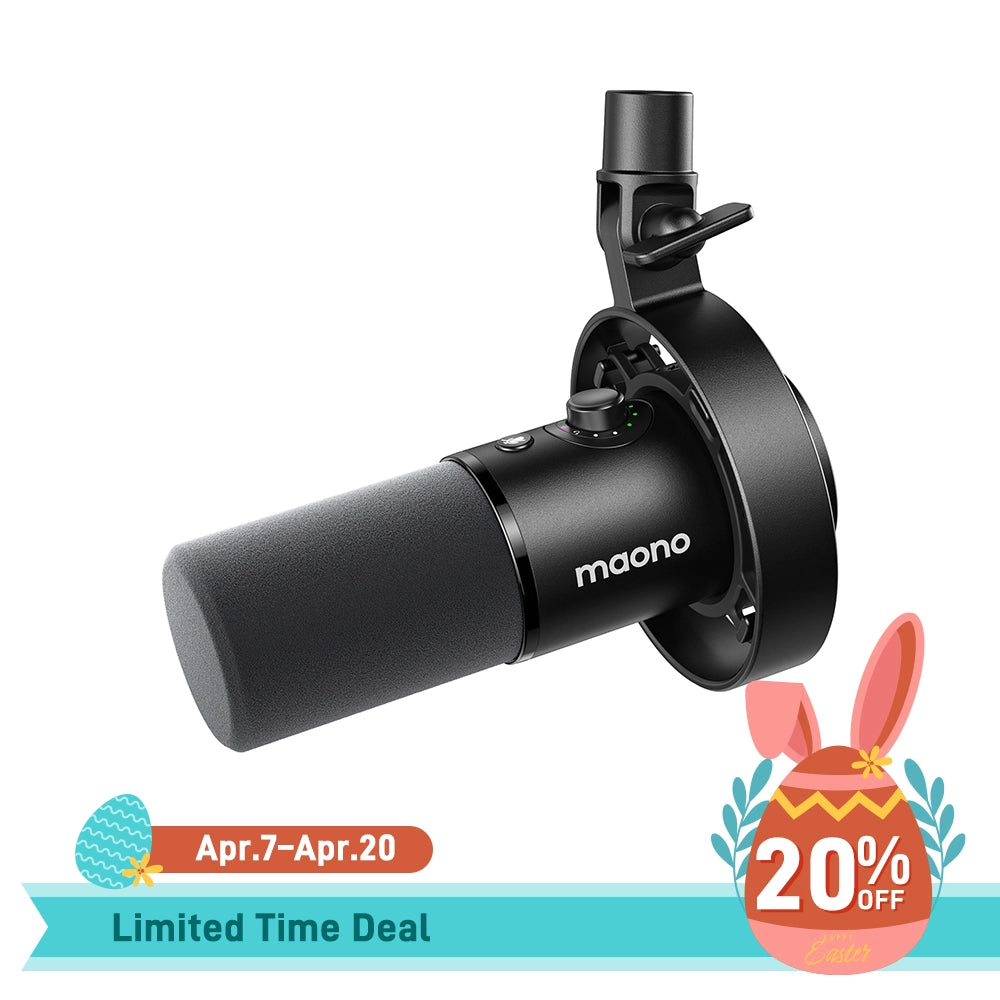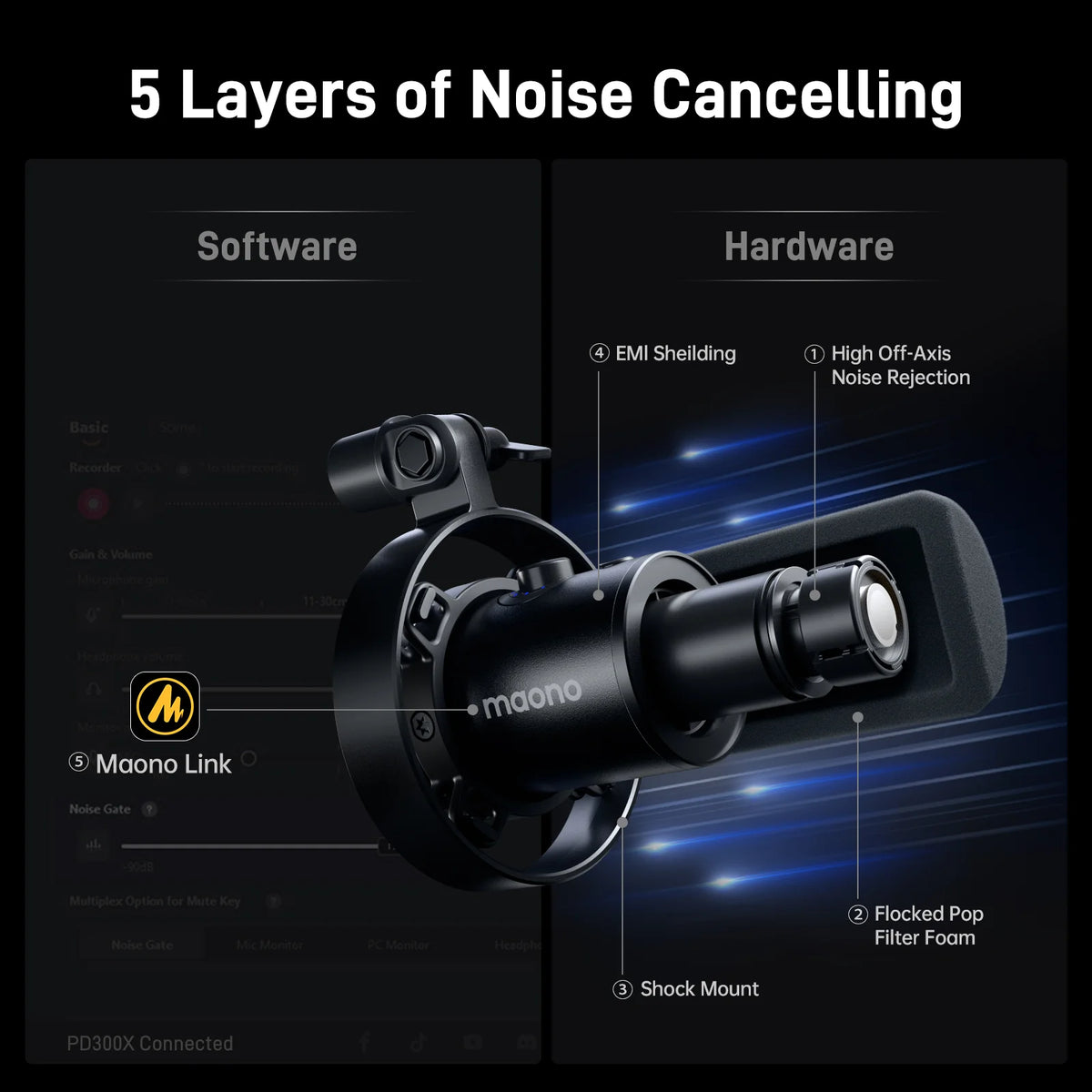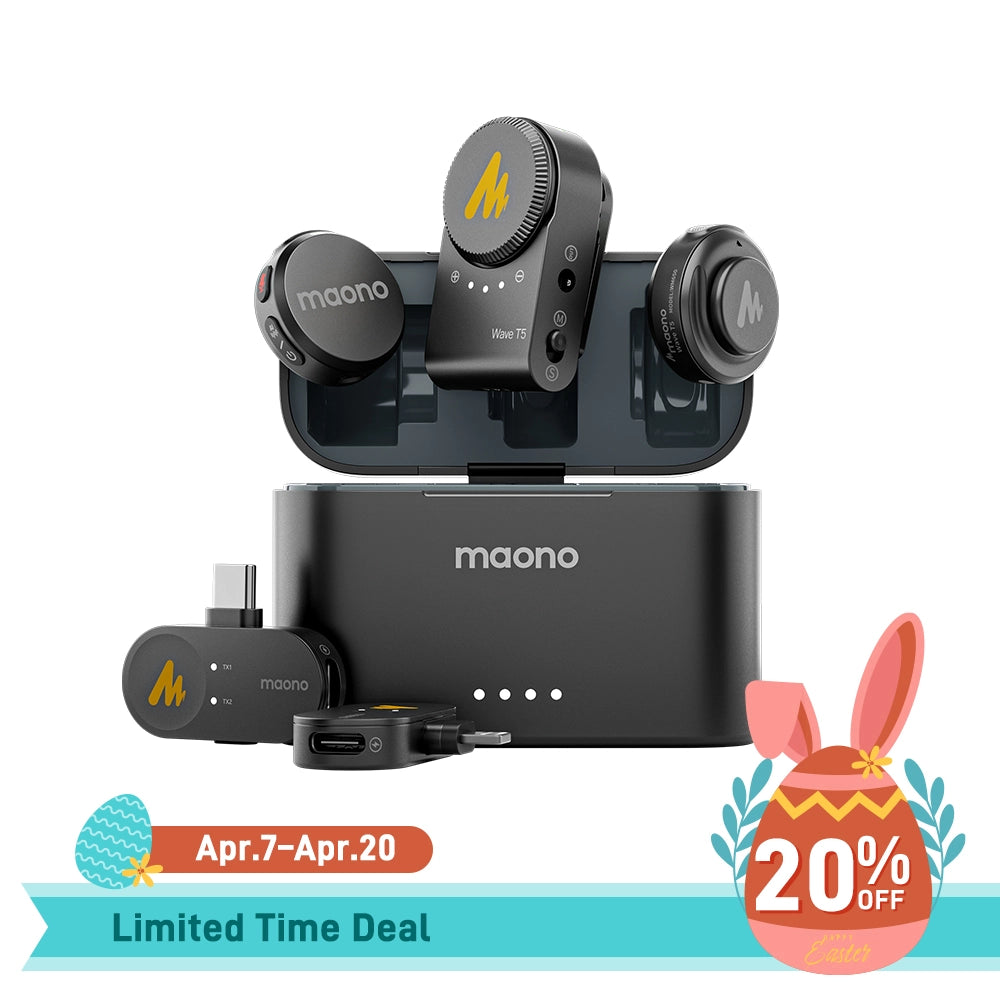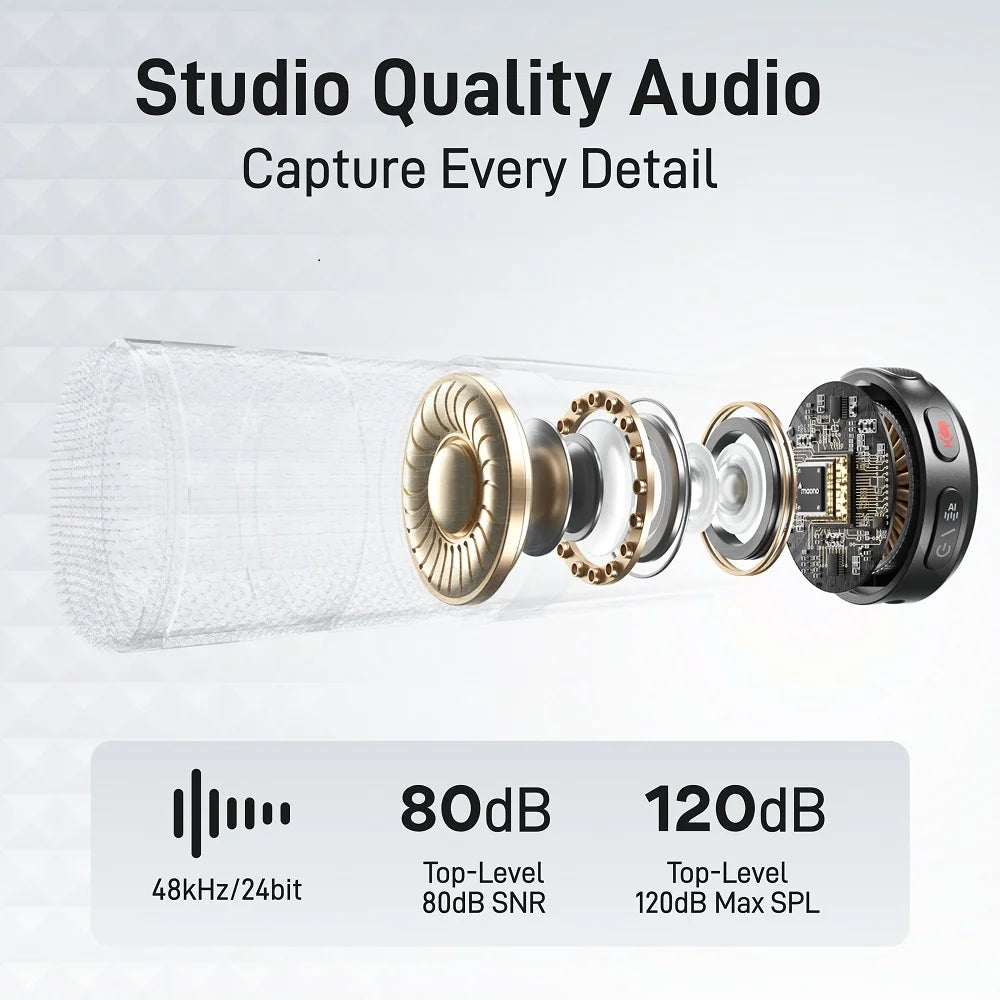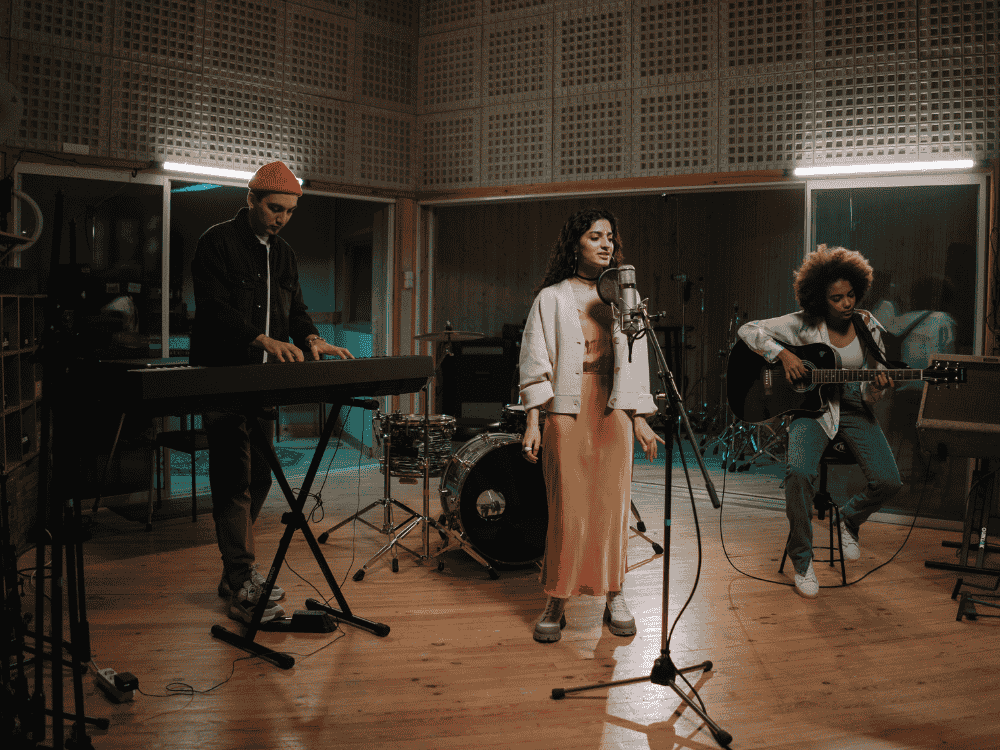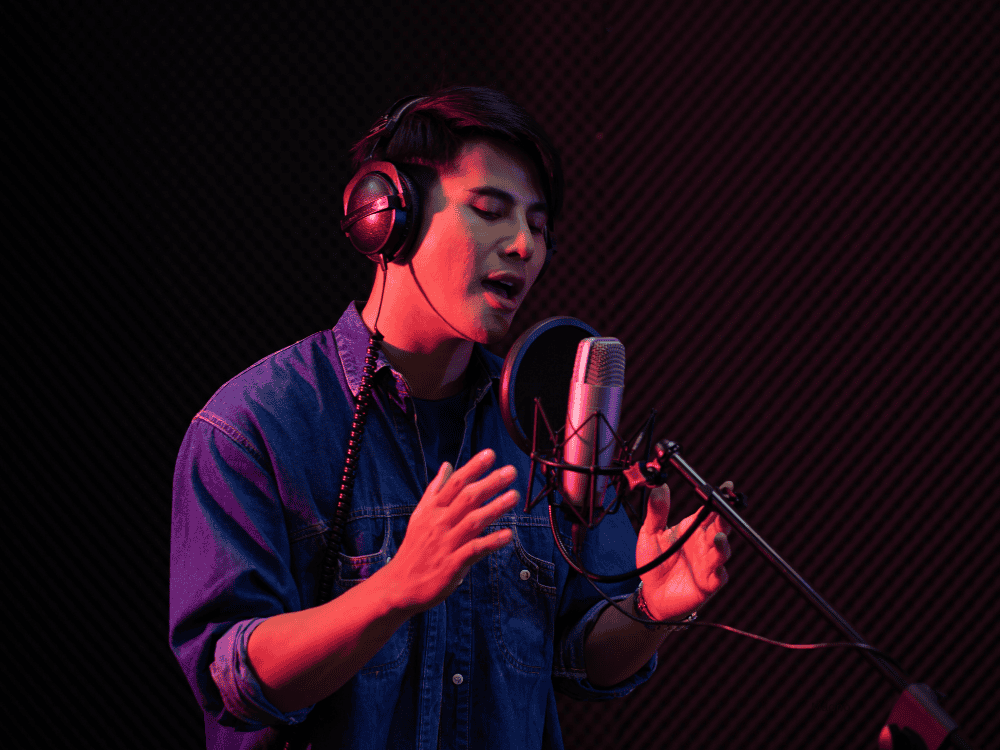Choosing the right microphone is essential for capturing the best audio quality, whether you are recording in a professional studio, at home, or performing live. Two of the most common types of microphones are dynamic and condenser microphones. Each has its unique characteristics, making them suitable for different situations and purposes. This guide will help you understand the differences between dynamic vs condenser mics, when to use each type, and which might be best for your needs, particularly for vocals.
Condenser Microphone and Dynamic Microphone Differences
Dynamic microphones and condenser microphones are fundamentally different in how they convert sound into electrical signals.
Dynamic Microphones:
- Construction: Dynamic microphones use a diaphragm attached to a coil of wire, placed within the magnetic field of a magnet. When sound waves hit the diaphragm, it moves the coil, creating an electrical current.
- Characteristics: These microphones are known for their durability, less sensitivity to environmental noise, and ability to handle high sound pressure levels (SPL). They do not require external power (phantom power).
Condenser Microphones:
- Construction: Condenser microphones use a diaphragm placed very close to a backplate, forming a capacitor. Sound waves cause variations in the distance between the diaphragm and the backplate, creating a change in capacitance that generates the electrical signal.
- Characteristics: Condenser microphones are highly sensitive and produce a more accurate and detailed sound. They require external power, usually provided by phantom power from a mixer or audio interface.
Condenser vs. Dynamic: What Scenarios to Use Each
If you're thinking about what mic to use in specific scenarios, here are three examples to help determine which one to use for each situation—condenser vs. dynamic for vocals:
Studio Recording
Condenser Microphones:
- Condensers are ideal for studio recording due to their sensitivity and ability to capture detailed audio. They are excellent for recording vocals and acoustic instruments where capturing the nuances of sound is crucial.
Dynamic Microphones:
- Dynamic mics can be used in studio settings, particularly for recording louder sound sources like drums or guitar amplifiers. Their durability and high SPL handling make them suitable for these applications.
Home Recording: Condenser Mic vs Dynamic Mic for Singing
Condenser Microphones:
- Condenser mics are preferred for home recording studios where high-quality vocal and instrument recordings are desired. However, they may pick up more background noise, which can be an issue in untreated rooms.
Dynamic Microphones:
- Dynamic micsa are a good choice for home recording, especially in untreated rooms, as they are less sensitive to background noise and room acoustics.
Live Performances
Condenser Microphones:
- Condenser mics are less commonly used in live settings due to their sensitivity to feedback and handling noise. They can be used for specific applications, such as overheads for drums or capturing choirs.
Dynamic Microphones:
- Dynamic mics are the standard choice for live performances. Their durability, feedback rejection, and ability to handle high SPL make them perfect for live vocals and instruments.
Condenser vs. Dynamic for Vocals: Which Should I Use?
Condenser Microphones
Pros:
- High sensitivity and detail.
- Excellent frequency response, capturing the full range of vocals.
- Ideal for studio environments where capturing subtle nuances is important.
Cons:
- More prone to picking up background noise.
- Require phantom power.
- Generally more delicate and less durable than dynamic microphones.
Dynamic Microphones
Pros:
- Rugged and durable, making them ideal for live performances.
- Less sensitive to background noise.
- Do not require phantom power.
Cons:
- Less sensitive and detailed than condenser microphones.
- Limited frequency response compared to condensers, which may not capture the full richness of vocals.
Condenser vs. Dynamic Mic for Vocals on a Budget
Maono Condenser Microphone Example:
Maono offers budget-friendly condenser microphones that provide good audio quality for vocal recordings. For instance, the Maono A04 is a popular choice for those starting in home recording, offering a good balance between price and performance.
1. Maono A04
- Affordable price
- Plug-and-play setup with USB connection
- Good sound quality for the price
- Compact and lightweight
- Low power consumption
- Suitable for various applications like streaming, podcasting, and recording
- Lacks advanced features found in higher-end microphones
- Equipped with a high-quality cardioid capsule for excellent off-axis noise suppression
- Comes with a sturdy metal shock mount and a pop filter to reduce noise from plosives
- USB 2.0 data port for easy plug-and-play connection without the need for an external sound card
2. Maono HD300T
- Dual connectivity options (XLR and USB)
- Durable and sturdy build quality
- Good sound isolation with the cardioid pattern
- Versatile for different recording environments
- Integrated gain control and mute button
- Very affordable
- Requires some setup knowledge for XLR connection
- Dual-mode USB/XLR output for flexibility in different recording setups
- Built-in audio interface for plug-and-play USB connectivity
- Integrated gain control and mute button for easy adjustments
- Sturdy metal construction for durability and longevity
- Includes a shock mount and pop filter
People Also Ask:
1. Should I use a dynamic or condenser mic for voice-over?
- Condenser microphones are generally preferred for voice-over work due to their sensitivity and ability to capture detailed sound.
2. Who should use a condenser microphone?
- Musicians, vocalists, and voice-over artists who require high-quality recordings and are working in controlled environments should use condenser microphones.
3. Which mic is best for recording?
- The best microphone for recording depends on the specific application. For vocals and acoustic instruments, a condenser microphone is typically best. For louder instruments or live recordings, a dynamic microphone might be more suitable.
4. What are condenser microphones best for?
- Condenser microphones are best for studio recordings where capturing detailed and nuanced audio is important. They excel in recording vocals, acoustic instruments, and any situation where sound detail is crucial.
FAQs
1. Which is better, condenser mic or dynamic mic?
- Neither is universally better; it depends on the use case. Condenser mics are better for detailed studio recordings, while dynamic mics are better for live performances and louder sound sources.
2. What are dynamic microphones best for?
- Dynamic microphones are best for live performances, recording loud sound sources like drums and guitar amps, and any situation where durability and feedback rejection are important.
3. Why do condenser mics sound better?
- Condenser mics are more sensitive and have a wider frequency response, allowing them to capture more detail and nuance, which can make them sound better in controlled
Conclusion
Choosing between a condenser mic or a dynamic mic depends largely on your specific recording needs and environment. Understanding the key differences between these two types of microphones is crucial for making an informed decision. A condenser microphone is ideal for capturing detailed, nuanced audio in a controlled studio setting, making it perfect for vocals and acoustic instruments. On the other hand, a dynamic microphone excels in live performances and recording louder sound sources due to its durability and ability to handle high sound pressure levels.
By considering the pros and cons of each type, as well as the specific applications for which they are best suited, you can select the right microphone to enhance your audio quality. Whether you're setting up a professional studio, recording at home, or performing live, knowing the condenser microphone and dynamic microphone difference will help you achieve the best possible results for your projects.



